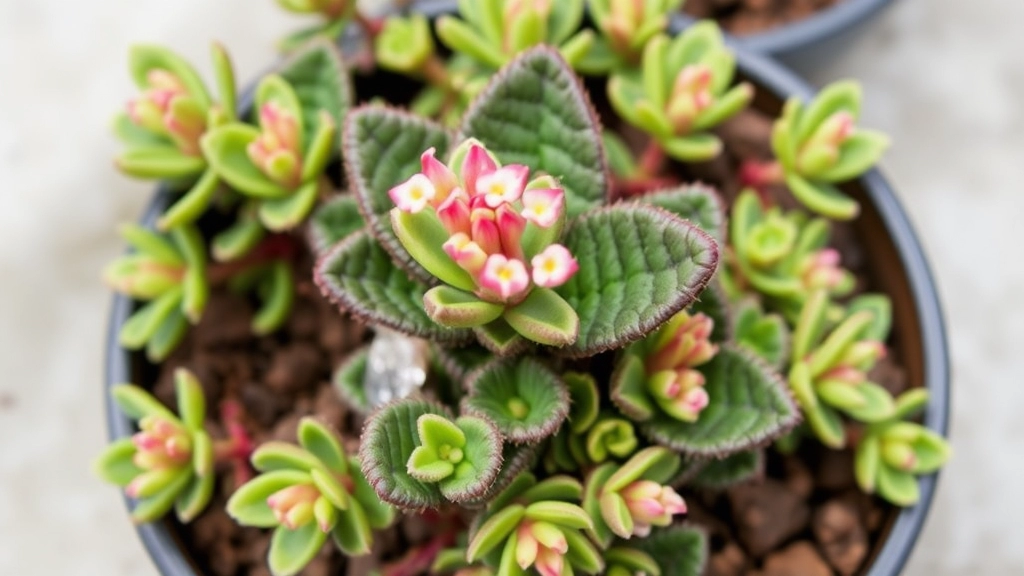Kalanchoe Tomentosa Nigra Care
Light Requirements
When it comes to Kalanchoe Tomentosa Nigra care, ensuring your plant thrives starts with understanding its light requirements. This succulent flourishes in bright, indirect sunlight but needs protection from intense, direct sun to prevent leaf burn. Positioning it near a window with filtered light can work wonders.
Watering
Watering is another crucial aspect of Kalanchoe Tomentosa Nigra care. The key is to water sparingly, only when the soil is completely dry. Overwatering can lead to root rot, a common issue with succulents. Using well-draining, sandy soil or a cactus mix, along with pots that have proper drainage holes, helps maintain the right moisture levels.
Are you wondering what kind of light your Kalanchoe Tomentosa Nigra needs to thrive?
This succulent, often referred to as the “Panda Plant,” flourishes best in bright, indirect sunlight.
### Key Light Considerations:
– **Direct Sunlight**: While Kalanchoe Tomentosa Nigra can tolerate some direct sunlight, too much can scorch its leaves. Aim for about 4-6 hours of bright light daily.
– **Indirect Light**: Placing it near a window with filtered light is ideal. This helps maintain its vibrant colour without causing damage.
– **Artificial Light**: If natural light is limited, consider using grow lights. They can effectively supplement your plant’s needs.
### Signs of Proper Light Levels:
– **Healthy Growth**: Look for new leaves developing and an overall plump appearance.
– **Leaf Colour**: A healthy plant will have rich, green leaves. If they start to look pale or stretched, it might not be getting enough light.
For more detailed care instructions, you might find our [complete guide to Kalanchoe Tomentosa](https://planthq.org/how-to-care-for-kalanchoe-tomentosa-complete-guide/) useful. Additionally, if you’re interested in exploring different varieties, check out our article on [types of Kalanchoe Tomentosa](https://planthq.org/types-of-kalanchoe-tomentosa-varieties-and-care-tips/).
Watering Guidelines
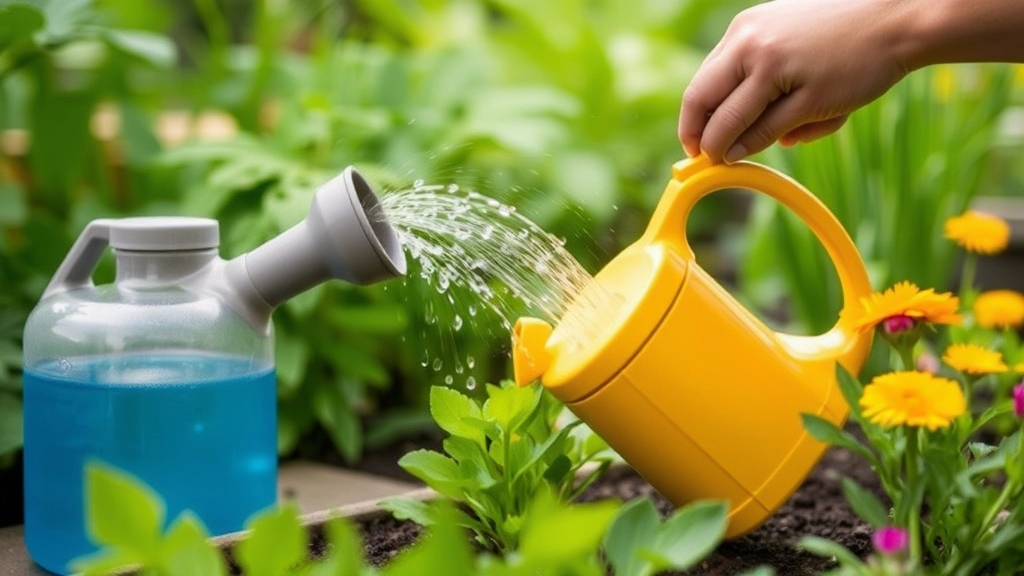
So, you’ve got your Kalanchoe Tomentosa Nigra, and now you’re probably wondering, “How much water does this beauty really need?”
Here’s the scoop:
- Less is More: This succulent is a champion at storing water, so it thrives on a “drought and flood” routine. Water it thoroughly, then let the soil dry out completely before the next drink.
- Check the Soil: Stick your finger about an inch into the soil. If it feels dry, it’s time to water. If it’s still moist, hold off.
- Seasonal Changes: During the growing season (spring and summer), your Kalanchoe might need watering every couple of weeks. But as winter rolls in, cut back to once a month, or even less.
- Watering Technique: When you do water, aim for the base of the plant. Avoid getting water on the leaves to prevent rot.
I remember when I first got mine, I was so eager to keep it hydrated that I overwatered it. Lesson learned!
Choosing the right soil and potting mix for your Kalanchoe Tomentosa Nigra is essential for its health and growth.
Many plant enthusiasts often wonder: “What type of soil will keep my succulent thriving?”
To ensure your Kalanchoe thrives, consider the following soil characteristics:
– **Well-draining**: Succulents like Kalanchoe Tomentosa Nigra require soil that allows excess water to escape quickly.
– **Aerated**: A mix that promotes airflow to the roots is crucial.
– **pH level**: Aim for a slightly acidic to neutral pH (around 6.0 to 7.0).
Here are some popular potting mix options that work well:
– **Cactus Mix**: Specifically formulated for succulents, this mix usually contains sand, perlite, and peat.
– **DIY Mix**: Combine equal parts of potting soil, coarse sand, and perlite for an ideal blend.
– **Commercial Succulent Mix**: Readily available at garden centres, these mixes often contain the right balance of ingredients.
When choosing a pot, consider:
– **Drainage holes**: Ensure your pot has adequate drainage to prevent root rot.
– **Size**: A pot that is slightly larger than the root ball allows for growth without excessive soil that retains moisture.
For more detailed guidance on caring for Kalanchoe Tomentosa, you might find our [Complete Guide](https://planthq.org/how-to-care-for-panda-plant-kalanchoe-tomentosa-a-complete-guide/) useful. Additionally, if you’re interested in different varieties, check out our [Types and Care Tips](https://planthq.org/types-of-kalanchoe-tomentosa-varieties-and-care-tips/).
Temperature and Humidity Preferences

When caring for Kalanchoe Tomentosa Nigra, understanding its temperature and humidity preferences is crucial for ensuring healthy growth.
Ideal Temperature Range
Kalanchoe Tomentosa Nigra thrives in temperatures between 20°C to 25°C (68°F to 77°F) during the day.
- Nighttime Temperatures: It can tolerate slightly cooler nights, ideally around 15°C (59°F).
- Frost Sensitivity: This succulent is not frost-tolerant. If temperatures drop below 10°C (50°F), it’s essential to bring the plant indoors.
Humidity Levels
Kalanchoe Tomentosa Nigra prefers a dry environment, making it suitable for average household humidity levels.
- Optimal Humidity: Aim for 30% to 50% humidity.
- Avoid Excess Moisture: High humidity can lead to fungal diseases, so avoid placing it in overly humid areas like bathrooms.
Practical Tips for Temperature and Humidity Control
- Indoor Placement: Keep your Kalanchoe in a well-ventilated area, away from drafts and heating vents.
- Seasonal Adjustments: During winter, consider using a heating mat if your home gets particularly cold.
- Monitor Humidity: Use a hygrometer to keep track of humidity levels, especially in winter when indoor air can become dry.
Fertilizing Needs for Kalanchoe Tomentosa Nigra
Are you unsure about how to properly fertilize your Kalanchoe Tomentosa Nigra? This succulent thrives with the right nutrients, but overdoing it can lead to problems.
Understanding Fertilizer Requirements
Kalanchoe Tomentosa Nigra, commonly known as the Panda Plant, benefits from a balanced fertilizing routine. Here’s what you need to know:
- Type of Fertilizer: Use a diluted, balanced liquid fertilizer, ideally one formulated for succulents or cacti. Look for an NPK ratio of around 10-10-10.
- Frequency: Fertilize during the growing season, typically spring and summer. A monthly application is usually sufficient.
- Dilution: Always dilute the fertilizer to half the recommended strength to avoid root burn.
Signs of Over-Fertilization
It’s crucial to monitor your plant for signs of over-fertilization, which can include:
- Yellowing leaves
- Leaf drop
- Stunted growth
If you notice these symptoms, flush the soil with water to help remove excess nutrients.
Seasonal Adjustments
As the seasons change, so do the nutrient needs of your Kalanchoe Tomentosa Nigra.
- Dormancy: During the fall and winter months, reduce or eliminate fertilization as the plant enters dormancy.
- Rejuvenation: In early spring, resume your fertilizing schedule to encourage new growth.
For more detailed care tips, check out our complete guide on caring for Kalanchoe Tomentosa. Additionally, you might find our article on watering best practices for Kalanchoe Tomentosa helpful.
Propagation Methods for Kalanchoe Tomentosa Nigra
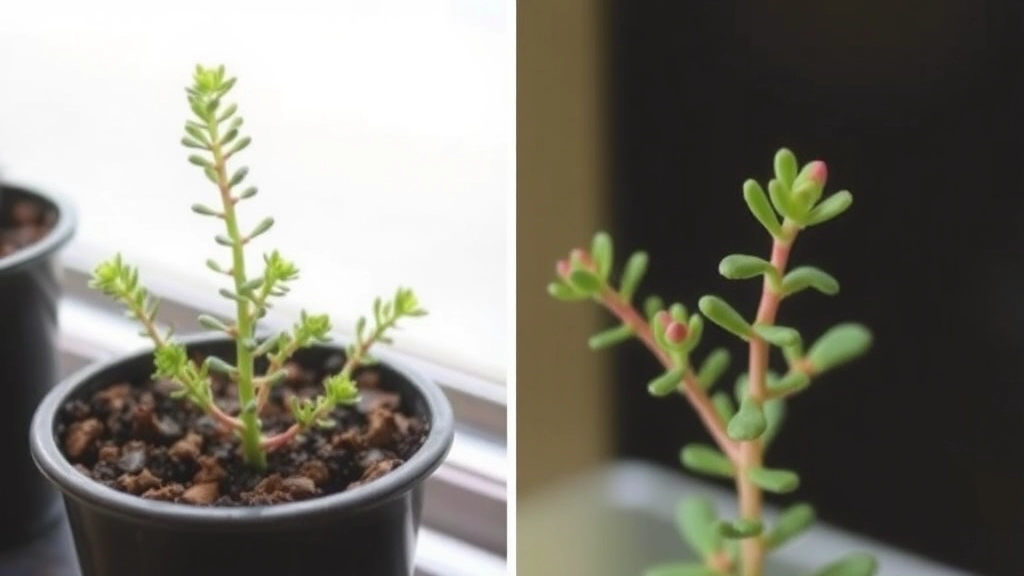
So, you’re keen to multiply your Kalanchoe Tomentosa Nigra? Great choice! These beauties are not just easy to care for; they’re also a breeze to propagate.
Why Propagate?
You might be wondering why you’d want more of these charming plants.
- Sharing the Love: They make fantastic gifts.
- Cost-Effective: Why buy when you can grow?
- Personal Collection: Expand your indoor jungle!
Methods of Propagation
Here’s how you can get started:
- Leaf Cuttings:
- Choose healthy leaves from the parent plant.
- Let them dry for a day or two to form a callus.
- Place them in well-draining soil.
- Water lightly and keep in a warm, bright spot.
- Stem Cuttings:
- Cut a healthy stem, about 4-6 inches long.
- Allow it to dry for a day to prevent rot.
- Plant it in soil, ensuring it’s upright.
- Water sparingly until roots develop.
- Offsets:
- Look for small plantlets at the base of the parent.
- Gently twist them off.
- Plant them directly into soil.
- Water lightly until established.
Tips for Success
- Timing: Spring is the best time for propagation.
- Humidity: A little humidity can help, but avoid soggy soil.
- Patience: It can take a few weeks for roots to develop.
As we delve into the care of Kalanchoe Tomentosa Nigra, understanding potential pests and diseases is crucial for maintaining its health and vibrancy.
### Common Pests
Kalanchoe Tomentosa Nigra can attract a few unwelcome guests. Here are the most common pests to watch out for:
– **Mealybugs**: Small, white, cotton-like insects that often cluster in leaf axils. They can weaken your plant by sucking its sap.
– **Aphids**: Tiny, green or black insects that can distort new growth and lead to sticky residue on leaves.
– **Spider Mites**: These tiny pests thrive in dry conditions and may cause webbing and leaf discoloration.
### Signs of Infestation
Identifying a pest problem early can save your Kalanchoe from significant damage. Look for:
– Yellowing leaves
– Stunted growth
– Sticky residue on leaves
– Visible insects or webs
### Treatment Options
If you spot any of these pests, don’t panic. Here are some effective treatments:
– **Manual Removal**: For mealybugs and aphids, gently wipe them off with a damp cloth or use a cotton swab dipped in alcohol.
– **Insecticidal Soap**: This is a safe option that can effectively eliminate pests without harming your plant.
– **Neem Oil**: A natural pesticide that can deter various pests while being gentle on your plant.
### Common Diseases
While pests are a concern, diseases can also affect your Kalanchoe. The most common include:
– **Root Rot**: Often caused by overwatering, this disease leads to mushy roots and wilting leaves.
– **Powdery Mildew**: A fungal disease that appears as a white powdery coating on leaves, often due to high humidity and poor air circulation.
### Prevention Strategies
To keep your Kalanchoe healthy, consider these preventive measures:
– **Proper Watering**: Ensure your plant is not sitting in water. Allow the soil to dry out between waterings. For more detailed guidance, check out [Kalanchoe Tomentosa Watering Best Practices](https://planthq.org/kalanchoe-tomentosa-watering-best-practices-tips/).
– **Good Air Circulation**: Place your plant in a spot with adequate airflow to reduce humidity and prevent fungal growth.
– **Regular Inspections**: Check your plant frequently for any signs of pests or disease. For comprehensive care tips, you can refer to [How to Care for Panda Plant](https://planthq.org/how-to-care-for-panda-plant-kalanchoe-tomentosa-a-complete-guide/).
Dormancy and Seasonal Care for Kalanchoe Tomentosa Nigra
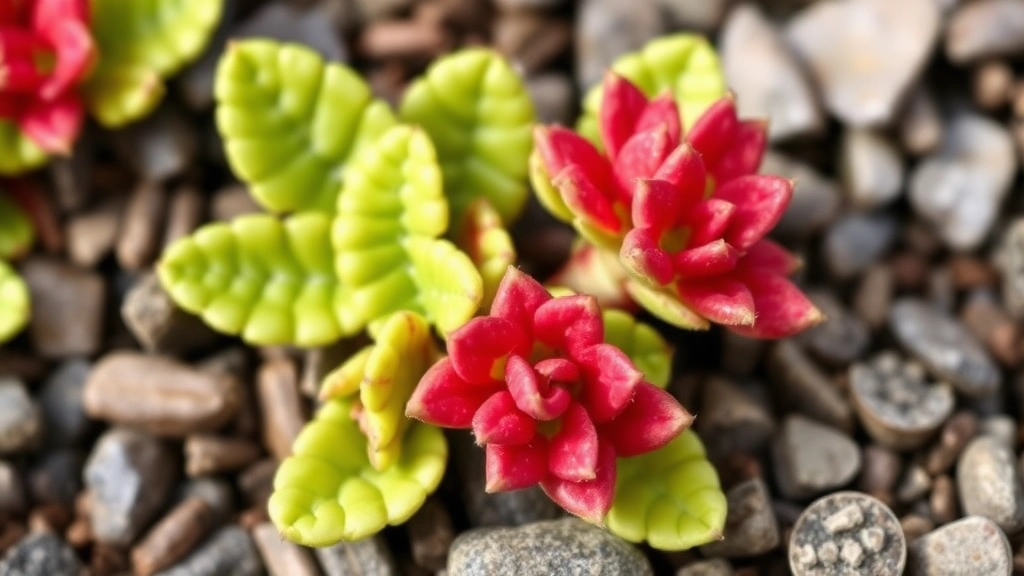
So, you’ve got your Kalanchoe Tomentosa Nigra thriving, but what about those quieter months?
Understanding Dormancy
Like many succulents, your Kalanchoe will enter a dormant phase, usually in winter. This is totally normal and a sign that your plant is conserving energy.
What to Expect During Dormancy:
- Slower Growth: You might notice your plant isn’t putting out new leaves or flowers. Don’t panic; it’s just taking a breather.
- Water Needs: During this time, your Kalanchoe will need less water. Aim for a good soak every 3-4 weeks, depending on your climate.
Seasonal Care Tips:
- Light: Even though it’s winter, keep your plant in bright, indirect light. A south-facing window is ideal.
- Temperature: Keep it cozy but not too warm. Aim for temperatures between 10-15°C (50-59°F).
- Humidity: Kalanchoe prefers dry air, so don’t worry about humidity levels during this time.
Preparing for Spring:
As the days get longer and warmer, your Kalanchoe will start waking up. Here’s how to help it along:
- Gradually increase watering as growth resumes.
- Consider moving it to a brighter spot to soak up that spring sunshine.
Repotting Kalanchoe Tomentosa Nigra
Are you wondering when and how to repot your Kalanchoe Tomentosa Nigra? Repotting is essential for maintaining a healthy plant, especially as it grows.
When to Repot
- Every 2-3 years: Kalanchoe Tomentosa Nigra thrives best when repotted every couple of years.
- Signs of Root Bound: If you notice roots growing out of the drainage holes or the plant appears top-heavy, it’s time for a new pot.
Choosing the Right Pot
- Size: Select a pot that is 1-2 inches larger in diameter than the current one.
- Material: Terracotta pots are great as they allow for better air circulation.
Steps to Repot
- Prepare the New Pot: Ensure it has drainage holes.
- Remove the Plant: Gently take the Kalanchoe out of its old pot, being careful not to damage the roots.
- Inspect Roots: Trim any dead or rotting roots with clean scissors.
- Add Soil: Place a layer of fresh, well-draining soil in the new pot.
- Position the Plant: Place the Kalanchoe in the centre and fill around it with more soil, ensuring it sits at the same depth as before.
- Water: Give it a light watering to help settle the soil.
Repotting your Kalanchoe Tomentosa Nigra not only promotes healthy growth but also refreshes the soil nutrients. For more detailed care instructions, check out our complete guide on caring for Kalanchoe Tomentosa. Additionally, if you’re interested in propagation, our step-by-step propagation guide can provide you with useful tips.
Pruning and Maintenance
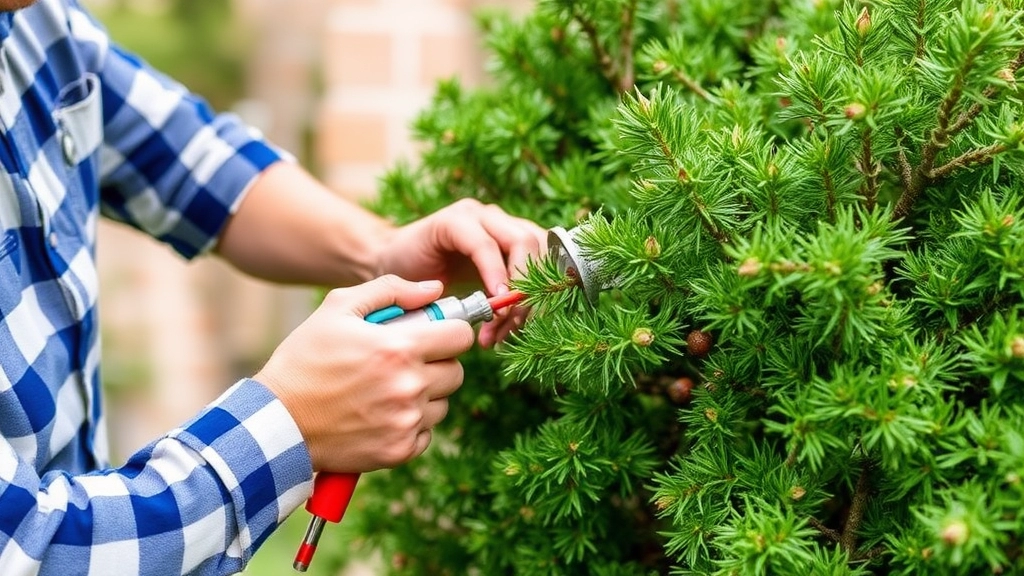
So, you’ve got your Kalanchoe Tomentosa Nigra thriving, but how do you keep it looking its best? Pruning and maintenance are key to ensuring your plant stays healthy and vibrant.
Why Prune?
Pruning isn’t just about aesthetics; it helps your plant grow stronger. You might be wondering:
- How often should I prune?
- What parts do I cut back?
- Will it hurt my plant?
When to Prune
- Timing: The best time to prune is in spring, just before the growing season kicks off.
- Signs: Look for leggy growth or dead leaves—these are your clues.
What to Cut
- Dead Leaves: Snip these off to keep your plant looking fresh.
- Leggy Stems: If your Kalanchoe is stretching for light, trim back those long stems to encourage bushier growth.
- Overcrowded Areas: If branches are too close, cut some back to improve air circulation.
How to Prune
- Use clean, sharp scissors or pruning shears.
- Make cuts just above a leaf node to encourage new growth.
- Don’t go overboard—less is more!
Maintenance Tips
- Dusting: Give your Kalanchoe a gentle wipe-down every now and then to keep its leaves clean and happy.
- Check for Pests: Regularly inspect for any unwanted guests like mealybugs or aphids.
Toxicity to Pets
As a plant enthusiast, you might wonder whether Kalanchoe Tomentosa Nigra is safe for your furry friends.
Understanding Toxicity
Kalanchoe species, including Kalanchoe Tomentosa Nigra, are known to be mildly toxic to pets, particularly cats and dogs.
Key Points to Consider:
- Symptoms of Toxicity: If ingested, pets may experience symptoms such as:
- Vomiting
- Diarrhoea
- Lethargy
- Loss of appetite
- Severity: While the plant is not lethal, its ingestion can lead to discomfort and health issues.
- Prevention: To keep your pets safe:
- Place your Kalanchoe Tomentosa Nigra out of reach.
- Consider using hanging pots or shelves.
What to Do If Ingested
If you suspect your pet has eaten any part of the plant, it’s essential to act quickly. For more detailed information, you can refer to our guide on protecting your pets from Kalanchoe toxicity.
- Immediate Action: Contact your veterinarian for guidance.
- Observation: Monitor your pet for any signs of distress.
For additional tips on care and prevention, check out our complete guide on caring for Kalanchoe Tomentosa.
Common Problems and Solutions for Kalanchoe Tomentosa Nigra
So, you’ve got your Kalanchoe Tomentosa Nigra, and things are looking pretty good. But what happens when you start noticing some issues? Don’t worry; it’s all part of the journey. Let’s dive into the common problems you might face and how to tackle them like a pro.
1. Leaf Dropping
What’s Happening?
If your leaves are dropping, it might be a sign of stress. This could be due to overwatering or even underwatering.
Solutions:
- Check the Soil: If it’s soggy, hold off on watering. If it’s bone dry, give it a good drink.
- Adjust Watering Schedule: Stick to a routine, but be flexible based on the season.
2. Yellowing Leaves
What’s Happening?
Yellow leaves can be a real bummer. This often points to overwatering or nutrient deficiencies.
Solutions:
- Inspect the Roots: If they’re mushy, you might have root rot. Trim the affected roots and repot in fresh soil.
- Fertilize: A balanced succulent fertilizer can help perk up those leaves.
3. Leggy Growth
What’s Happening?
If your Kalanchoe is stretching and looking leggy, it’s likely not getting enough light.
Solutions:
- Move to a Brighter Spot: Ensure it’s getting plenty of indirect sunlight.
- Rotate Your Plant: This encourages even growth all around.
4. Pests
What’s Happening?
Pests like mealybugs and aphids love to make a home on your succulent.
Solutions:
- Inspect Regularly: Catch them early by checking the undersides of leaves.
- Use Neem Oil: A natural remedy that helps keep those critters at bay.
5. Fungal Issues
What’s Happening?
Fungal infections can arise from excessive moisture.
Solutions:
- Improve Air Circulation: Make sure your plant isn’t crammed in a corner.
- Use Fungicide: If the problem persists, a fungicide can help clear it up.
FAQs on Kalanchoe Tomentosa Nigra Care
How often should I water my Kalanchoe Tomentosa Nigra?
Water your Kalanchoe Tomentosa Nigra thoroughly, then let the soil dry out completely before the next watering. During the growing season (spring and summer), this may be every couple of weeks. In winter, reduce watering to once a month or even less.
What is the ideal temperature range for Kalanchoe Tomentosa Nigra?
Kalanchoe Tomentosa Nigra thrives in temperatures between 20°C to 25°C (68°F to 77°F) during the day and can tolerate nighttime temperatures around 15°C (59°F). It is not frost-tolerant and should be brought indoors if temperatures drop below 10°C (50°F).
What humidity levels are best for Kalanchoe Tomentosa Nigra?
This succulent prefers a dry environment with optimal humidity levels between 30% to 50%. High humidity can lead to fungal diseases, so avoid placing it in overly humid areas like bathrooms.
How can I propagate my Kalanchoe Tomentosa Nigra?
You can propagate your Kalanchoe Tomentosa Nigra through leaf cuttings, stem cuttings, or offsets. For best results, propagate in spring and ensure the soil is well-draining.
What should I expect during the dormancy period?
During dormancy, typically in winter, expect slower growth and reduced water needs. Water your plant every 3-4 weeks and keep it in bright, indirect light with temperatures between 10-15°C (50-59°F).
When and how should I prune my Kalanchoe Tomentosa Nigra?
Prune your plant in spring before the growing season. Trim dead leaves, leggy stems, and overcrowded areas to encourage bushier growth. Use clean, sharp scissors or pruning shears and make cuts just above a leaf node.
How do I maintain my Kalanchoe Tomentosa Nigra?
Regular maintenance includes dusting the leaves, checking for pests like mealybugs or aphids, and ensuring proper light and water conditions. Keep your plant in a well-ventilated area, away from drafts and heating vents.
References
-
How to Grow and Care for Kalanchoe Tomentosa
-
Kalanchoe tomentosa (Panda Plant)
-
Kalanchoe Tomentosa Care Guide
